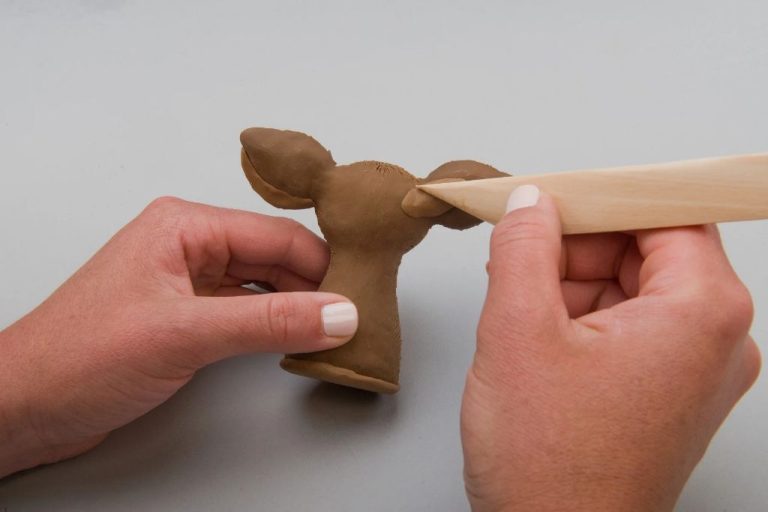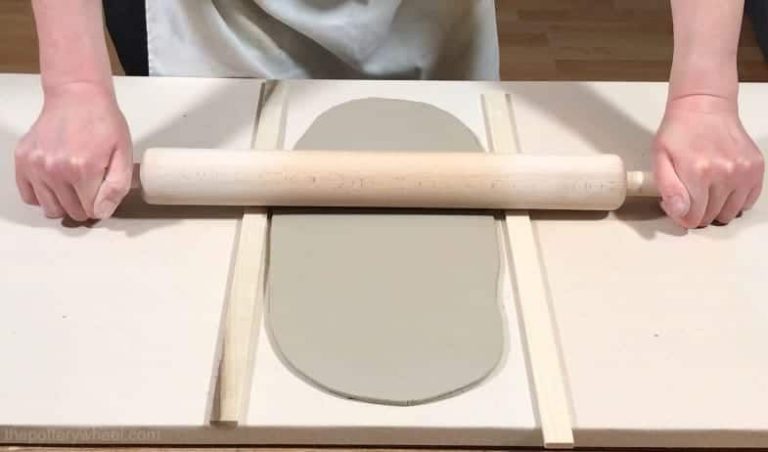Can Clay Pots Be Submerged In Water?
Clay pots are one of the oldest human-made vessels, dating back over 10,000 years. But can these porous earthenware containers withstand the watery environment of a fountain, aquarium, or underwater planter? This question cuts to the heart of the relationship between clay and water.
In this article, we’ll explore the porous nature of clay, whether certain types of finishes make clay pots impervious to water, strength considerations for submerged pots, appropriate uses for submerged clay vessels, and best practices for keeping them intact underwater. You’ll find examples of beautiful submerged clay pot projects as well as important factors to consider before taking the plunge with your own terra cotta or ceramic creation.
Types of Clay Used in Pottery
There are several types of clay that are commonly used to make pots and other ceramic items:
Earthenware – This is a porous clay that is fired at lower temperatures, usually between 1000-1200°F. It absorbs water easily and is not very durable. Earthenware includes terracotta pots.
Stoneware – A strong, vitrified clay that is fired around 2200°F. The high firing temperature makes stoneware non-porous and watertight. Stoneware clay is excellent for functional pottery.
Porcelain – A highly refined white clay that becomes vitrified and translucent when fired at over 2300°F. Porcelain is resistant to chipping and staining and can be thin yet durable.
Ball clay – A secondary clay added to stoneware or porcelain to improve plasticity and workability of the clay. It helps keep the pot from slumping while drying.
The clay type determines the strength, porosity, color, and workability of the finished piece. Choosing the right clay for the desired utility and look is an important first step in pottery making.
Porosity of Clay
Clay is a porous material. This means it has small holes throughout its structure that allow water and air to pass through. However, not all clay bodies have the same level of porosity.
The porosity of clay depends on several factors:
- The clay’s particle size – Smaller particles create more space between them, increasing porosity.
- Additives like sand or grog – Adding non-plastic particles opens up the clay body and increases porosity.
- Firing temperature – Firing to higher temperatures causes the clay particles to fuse together more tightly, reducing porosity.
A highly porous clay body absorbs water readily. When porous clay pots are filled with water, it seeps through the microscopic pores and leaks out. Unglazed terracotta is an example of a highly porous clay.
On the other hand, stoneware clays are less porous, especially when fired to higher temperatures. The lower porosity makes them hold water much better. Dense stoneware clay can be used to make pots that are suitable for submerging in water for extended periods.
So in summary, a clay pot’s porosity directly affects its ability to hold water without leaking. Choosing a less porous clay body is key for creating submergible pots.
Glazes and Sealants
Glazes are vitreous coatings applied to ceramic wares like clay pots to provide an impermeable surface and decorative finish. The glaze fills the pores of the clay body, creating a waterproof barrier that makes the pot less porous. Common glazes used on clay pots include soda, ash, feldspar, and specialty glazes made from combinations of metal oxides, silicas, and other minerals.
In addition to glazes, other sealants can be used to waterproof clay pots. Beeswax, linseed oil, and polyurethane can be brushed onto the surface of bare terra cotta pots to fill pores and prevent water absorption. Wax emulsion dips are also available that provide a protective coating for outdoor planters.
Applying any type of glaze or sealant to the interior and exterior of a clay pot will significantly reduce its porosity, making it suitable for submerged applications. An unglazed terra cotta pot will absorb water readily and become saturated. With a glaze or sealant, the pot becomes non-porous and waterproof. However, cracks, chips, or thin glaze coverage could still allow some water seepage over time.
Strength and Durability When Wet
The strength and durability of clay pots when wet depends on several factors. When clay is fired at high temperatures, it undergoes a chemical reaction that hardens and strengthens it. However, clay remains porous after firing. When soaked in water, the pores absorb moisture, which causes the pot to become heavier and more prone to damage from impacts or pressure.
How much moisture clay absorbs depends on the clay body composition and firing temperature. Low-fired earthenware clays remain quite porous and can absorb up to 30% of their weight in water, substantially weakening them. High-fired stoneware clays absorb far less moisture, but still become weaker when soaked.
The clay thickness also impacts durability when wet. Thicker clay has more structural integrity. Thin-walled pots become extremely fragile when saturated with water. Glazes or ceramic sealants can help reduce porosity and water absorption. An impermeable glaze allows almost no moisture to penetrate the clay body underneath.
In summary, soaking clay pots in water weakens them to varying degrees based on clay composition, firing method, wall thickness, and glazing. Care must be taken to avoid damage when clay pots are submerged or wet for extended periods.
Uses of Clay Pots
Clay pots have been used for thousands of years for a variety of purposes. Here are some of the most common uses for clay pots today:
Outdoor Planters – Clay pots work well for outdoor planters and flower pots because they allow air and water to pass through the material. The permeability helps prevent root rot. Clay pots come in many shapes, sizes, and colors to fit any garden décor.
Indoor Planters – Glazed clay pots are suitable for indoor use because the glaze makes them waterproof. This prevents damage to furniture or floors from water drainage. Unglazed terra cotta pots are not recommended for indoor plants because they can leak.
Cooking & Baking – Clay pots retain and distribute heat evenly, making them excellent for baking bread or cooking stews, soups, and rice dishes. Flameproof clay pots can go directly on a stove or in the oven.
Water Storage – Porous, unglazed clay pots slowly release water through evaporation. This helps keep contents cool in hot climates. Clay water pots are still used today in many parts of the world.
Decorative Use – Clay pots and vases have decorative uses around the home and garden. Their earthy terracotta colors and artisanal textures add rustic flair.
## Guideliness for Submersing Clay Pots
When submerging clay pots in water, it’s important to follow some basic guidelines to ensure the pots remain intact:
Choose an unglazed or naturally glazed clay pot – Unglazed terra cotta and natural clay pots are the best choices for submerging as they allow some water absorption. Pots with impermeable glazes may crack or break when submerged.
Soak the pot first – Before fully submerging, soak the pot in water for 30-60 minutes. This allows the clay to absorb water slowly and prevents cracks.
Submerge gradually – Lower the pot slowly into the water, especially the first few times. Do not submerge hot pots or subject them to sudden temperature changes.
Check for leaks – Look for water seeping through the clay, which indicates cracks. Remove leaking pots immediately.
Keep submerged – Once saturated, clay pots can remain safely submerged. However, do not let them dry out completely while submerged.
Avoid salts and hard water – Water with high mineral content may leave salt deposits and shorten the pot’s lifespan. Use purified or soft water if possible.
Do not submerge painted, etched, or fragile pots – Any decorations or structural weaknesses can deteriorate faster when submerged. Limit submerging to sturdy, undecorated clay pots.
Pros and Cons of Submerging Clay Pots
Submerging clay pots in water can provide some benefits but also has some drawbacks to consider. Here are the main pros and cons:
Pros
- Keeps plants hydrated. Submerging pots allows water to fully saturate the soil and keeps it moist for longer.
- Prevents drying out. With the pot fully immersed, the soil stays saturated and is less likely to dry out quickly.
- Allows for hydroponic growth. Some plants can be grown directly in water for a type of hydroponic gardening.
- Aesthetic purposes. Submerged pots can be used decoratively in ponds, fountains, aquariums and other water features.
Cons
- Risk of overwatering. Too much moisture can lead to rotting roots in some plants.
- Heavy pots may tip over. The weight of wet soil can cause unsecured pots to tip and spill.
- Harder to monitor soil. It’s more challenging to visually inspect soil moisture of submerged pots.
- Algae growth. Submerged pots can develop algae on the exterior surface.
- Leakage. Pots without proper sealant may leak soil into the water over time.
Examples of Submerged Clay Pots
Clay pots have been used underwater for various purposes throughout history. Here are some common examples of submerged clay pots:
- Aquatic plants: Unfired and porous clay pots are sometimes placed in aquariums or ponds to help aquatic plants root. The porous clay allows water to seep in while providing stability.
- Underwater cache pots: Glazed ceramic pots can be used as cache pots underwater to hold the root systems of aquatic plants. The glaze prevents water from seeping into the clay.
- Ancient harbor structures: Archaeologists have found remnants of ancient clay pot harbor structures submerged underwater. Large clay pots filled with rocks were arranged underwater to form breakwaters and piers.
- Fishing: In some parts of the world, clay pots are submerged to attract fish for fishing. The dark enclosed space draws in fish seeking shelter.
- Decoration: Glazed ceramic pots are sometimes incorporated into ponds, fountains, and aquascapes as decorative elements. They add visual interest and texture.
As these examples show, with proper clay selection and treatment, clay pots can serve a variety of functional and decorative purposes when submerged underwater.
Conclusion
In summary, whether clay pots can be submerged in water depends on several factors. The clay body and any applied glazes or sealants determine how porous the finished pot will be. More porous clay pots are prone to absorbing water, which can lead to cracking, leaching of minerals, and other damage over time. Less porous pots may hold up well to partial or temporary submersion. Using an appropriate clay body and applying an impermeable glaze suited for the particular application can allow some types of clay pots to be fully submerged. Always test on a sample pot before submerging any handcrafted or irreplaceable clay vessels. With careful selection and treatment of materials, many types of clay pots can safely be incorporated into fountains, aquariums, and other water features.
This overview shows that clay pot submersion is possible but requires consideration of the clay characteristics and intended use. We encourage you to apply these guidelines to determine if your specific pots are good candidates for submerging in water, based on their composition and your goals. With prudent testing beforehand, clay pots can often add natural beauty and a handmade look to a water environment.





